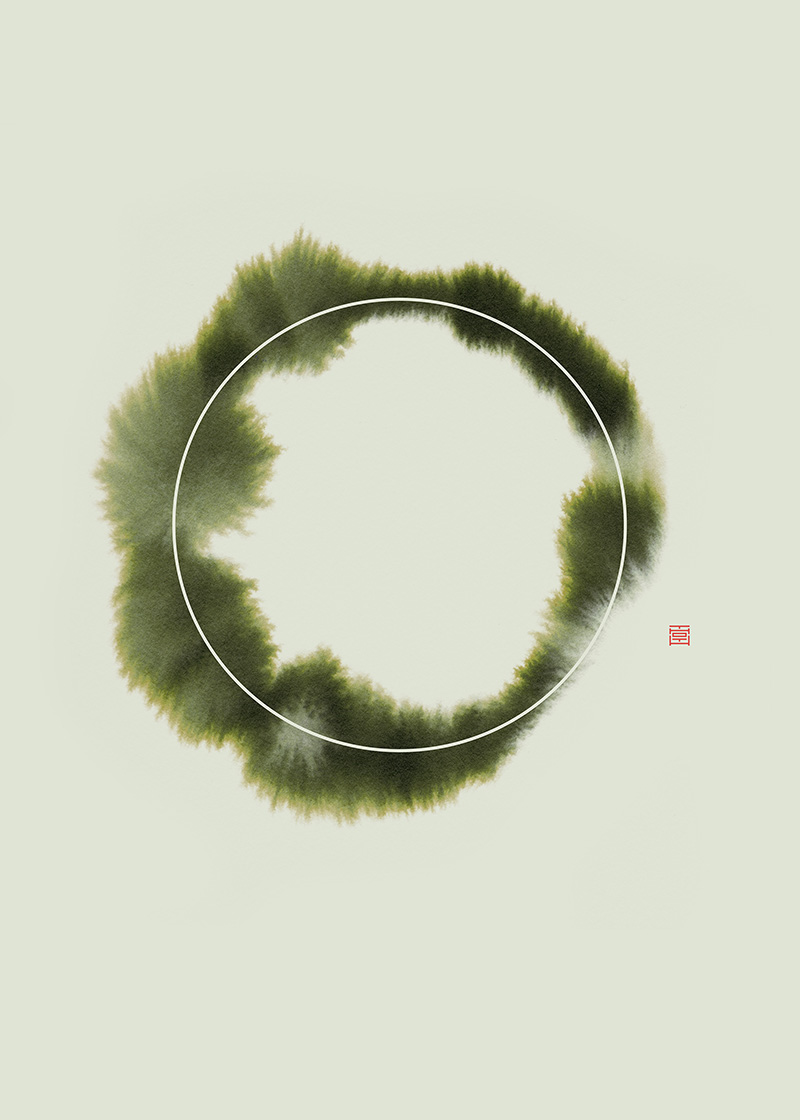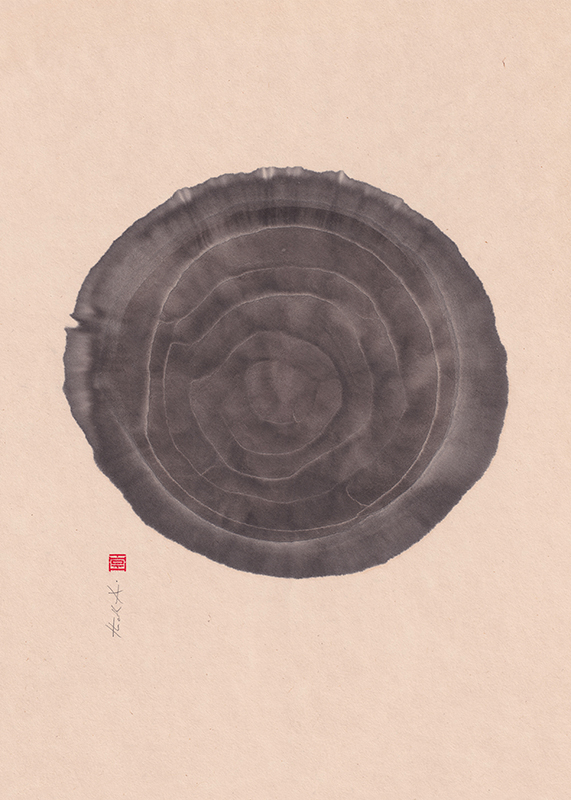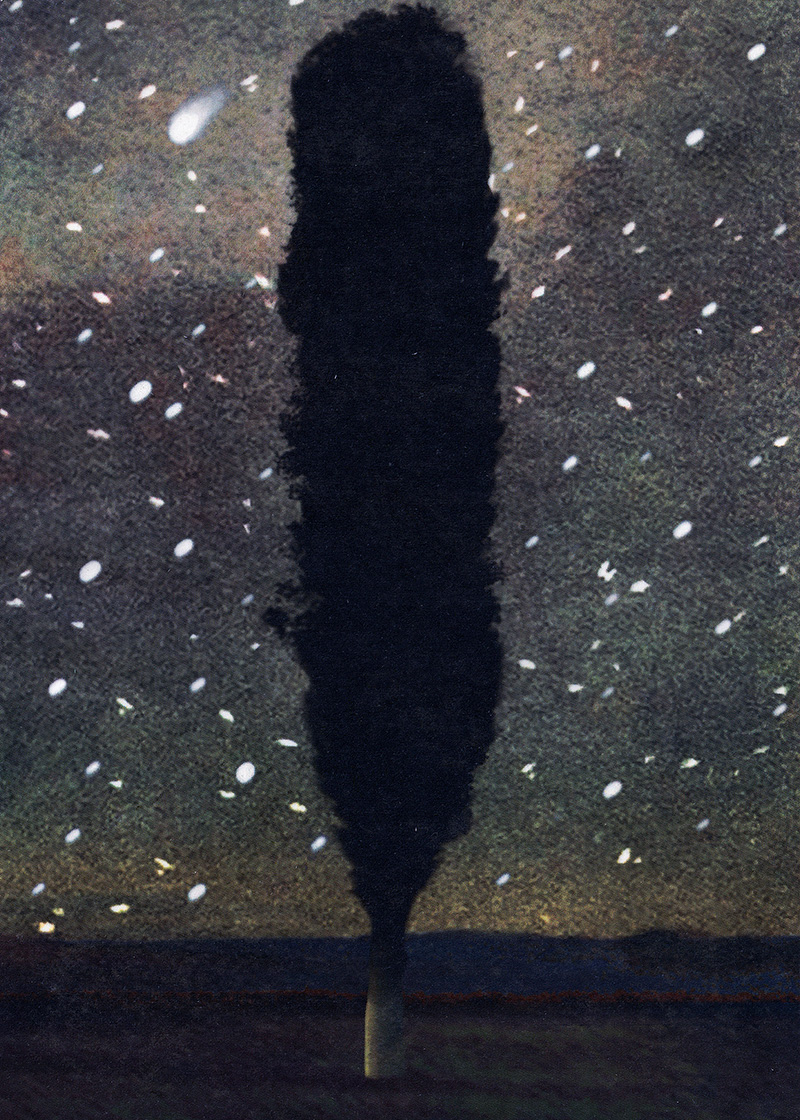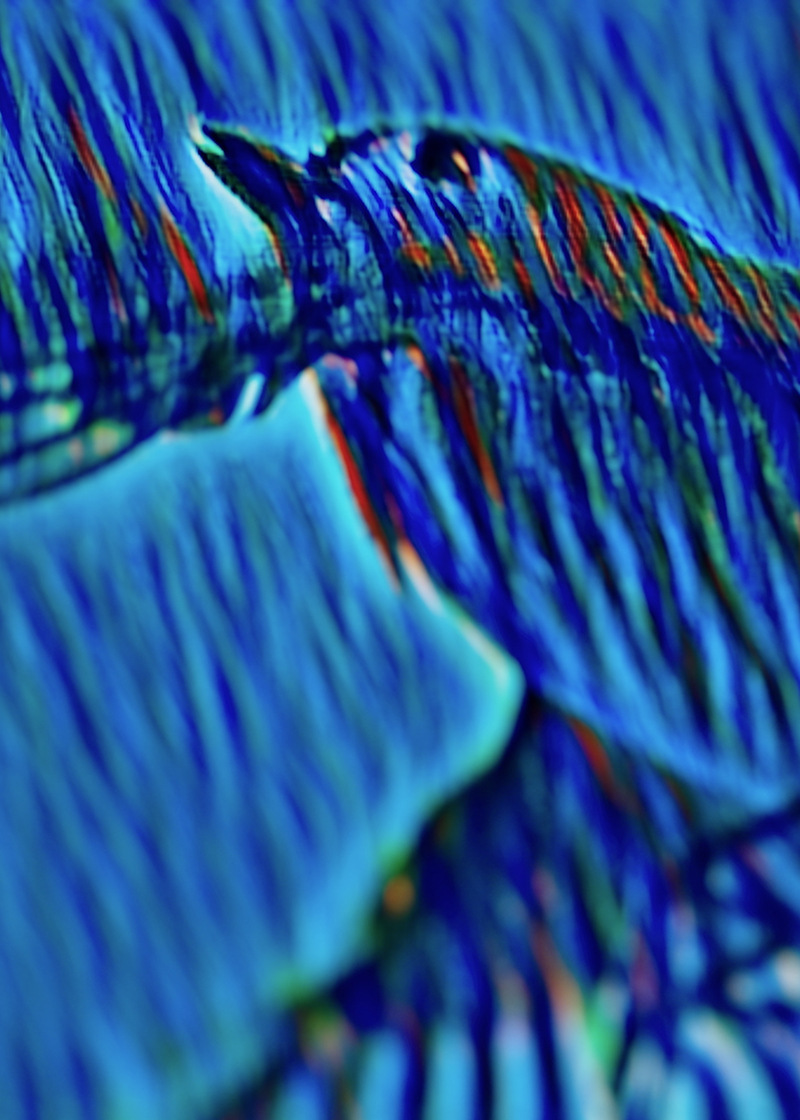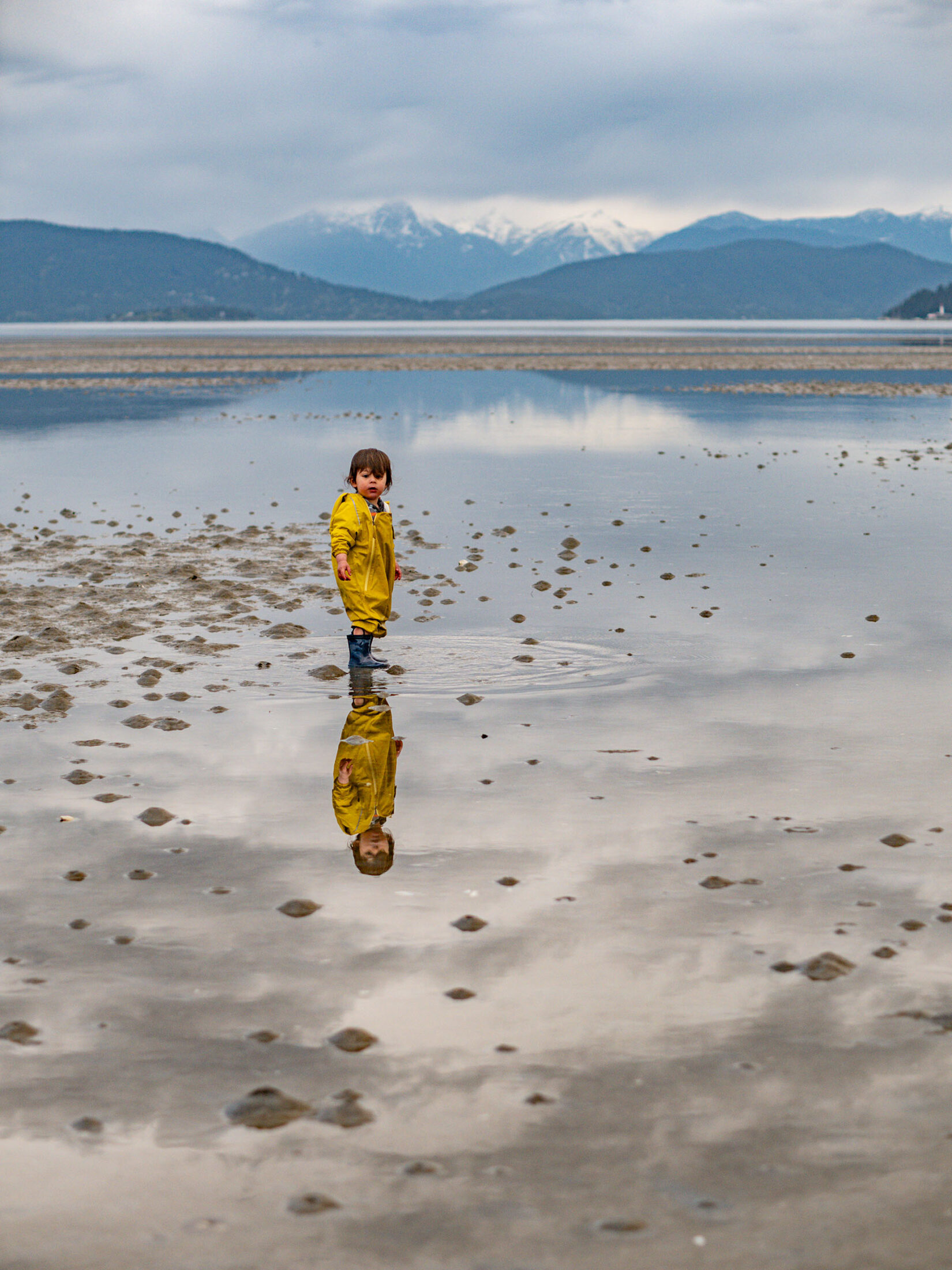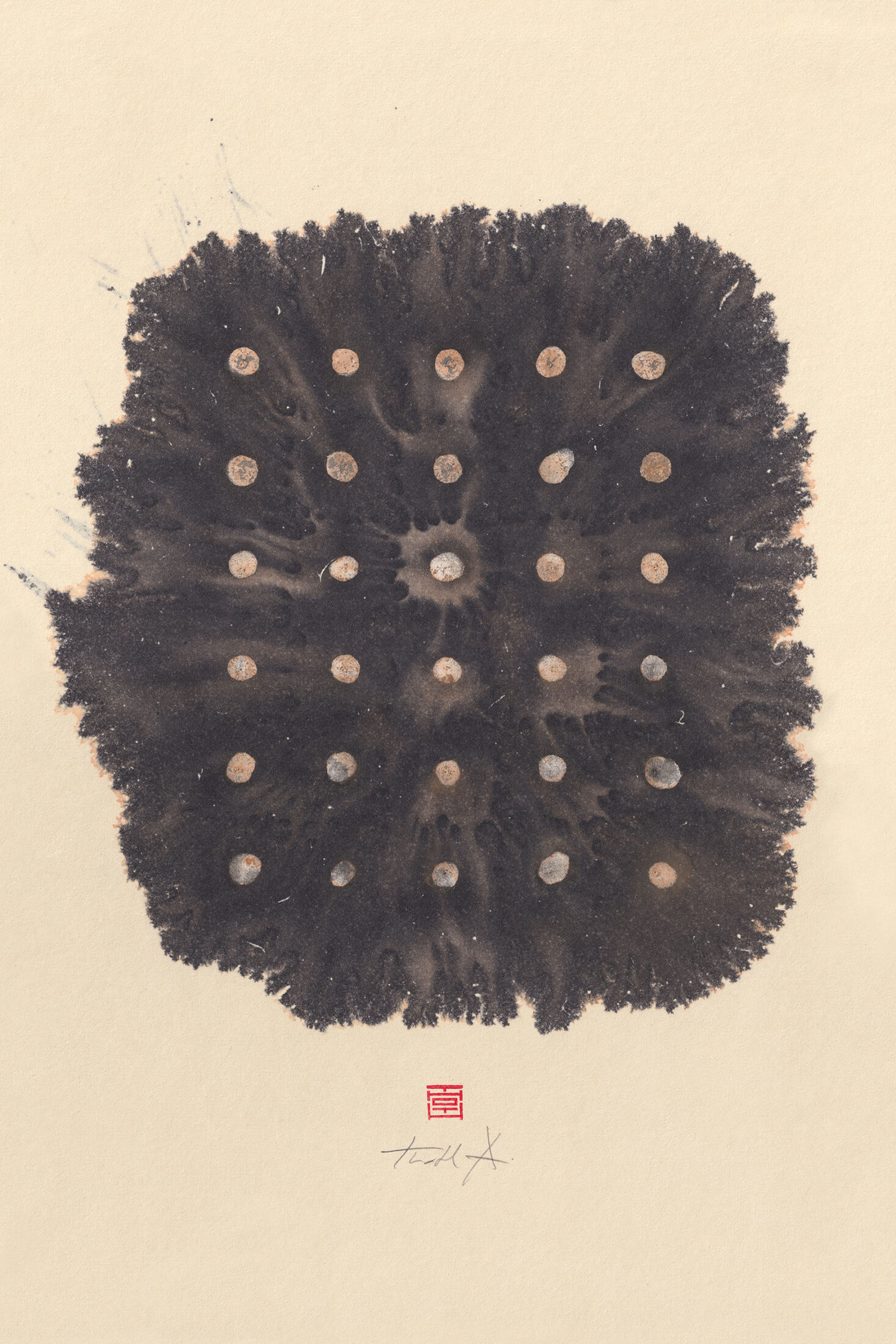
Artwork by Thoth Adan
Offering Our Attention with Humility
Emmanuel Vaughan-Lee is an author, Emmy- and Peabody Award–nominated filmmaker, and a Sufi teacher. He has directed more than twenty documentary films, including Taste of the Land, The Last Ice Age, Aloha Āina, The Nightingale’s Song, Earthrise, Sanctuaries of Silence, and Elemental, among others. His films have been screened at New York Film Festival, Tribeca Film Festival, SXSW, and Hot Docs, exhibited at the Smithsonian Museum and London’s Barbican, and featured on PBS POV, National Geographic, The New Yorker, and The New York Times Op-Docs. His first book, Remembering Earth: A Spiritual Ecology, is forthcoming from Shambhala in summer 2026. He is the founder, podcast host, and executive editor of Emergence Magazine.
Thoth Adan is a Swiss-born, Austrian-based artist who primarily works with sumi ink and mineral pigments on Japanese washi paper and wood panels. His paintings, abstract, minimal, and gestural, draw inspiration from Eastern philosophies and aesthetics as well as Western art movements such as Abstract Expressionism and Post-Minimalism, merging precision with introspection.
In this final talk of a three-part series from our Song of the Seasons retreat, Emergence executive editor and Sufi teacher Emmanuel Vaughan-Lee speaks about two essential elements needed if we are to tend to a relationship of reverence with the Earth: humility and offering. To ground ourselves in respect for the power of the Earth, and respond to Her unconditional generosity, we can begin by remembering to de-center our needs, and instead ask ourselves: What attitude towards the seasons can help me develop a relationship to place? How can I offer our love in response not only to the wonder, but to the pain of the Earth?
Transcript
This morning I wanted to speak about humility and offering, both in relation to the seasons and the cycle of the seasons, and to our relationship to the seasons, and more broadly within the context of a practice of spiritual ecology. Because spiritual ecology is an ontology, it is a philosophy, it is a way of being. But to me, at its core, it is a practice, which includes all of those but is based on relationality. And then the question arises, how does one be in relationship? And for me it is about humility and it is about offering. And those two essential ways of being, they flow together.
And in the past, the seasons and the broader living world through which they expressed themselves were a place of humility. And while the cycle of rebirth and growth and decay and death was more stable than it is now, sometimes the rain didn’t come, sometimes the flood did. The storm that washed things away, the tidal wave that crashed upon the shore—those natural occurrences that were part of the fabric of the seasons and the fabric of how the living world functions—were part of our story. And if you listen to ancient stories, those occurrences are woven into those ancient stories, into those myths, so that one would know what to do when the tidal wave came; or would know that a river changes its course, and that you can grow fields and houses and communities along a river’s banks, but ultimately the river will choose where it flows. And these observations over millennia brought on an extreme sense of humility that there was a broader power that really ultimately was the force behind everything.
And then in response to that awareness grew a remarkable tapestry of offerings, of rituals, of ceremonies, of teachings that recognized this broader power—the living, breathing Earth—and what is behind that. And that there must be an engagement where that awe of the power of this living Earth is acknowledged, and that acknowledgment then becomes a form of “practical reverence,” this term I shared of Robin Wall Kimmerer’s. Because reverence is not abstract; reverence is practical, if it is grounded in something that is real, like the observation of the power of the living Earth as it unfolds over millennia. And you take that in, and it becomes part of your fabric as a human being, as a culture, as a story.
And that humility kept us in check—in relationship to the offerings, in response to it. Not always. There are many stories of, usually, empires growing too big and, in response to that growth, forgetting the boundaries and the necessary respect that comes with our relationship with the living Earth. But our culture has taken that to the extreme. And because we have distanced ourselves so much from the seasons and the living Earth, and with our hubris have enacted a series of control mechanisms in which we no longer feel we are impacted by the force of nature in the way that our ancestors were, those mechanisms of offering, of being always rooted in a sense of awe for what surrounds us, mostly fell away, especially in the Western world. And the ones that remained often became trivialized and not rooted in that deep understanding of the original experience that they grew from.
And this is changing, because now we are again experiencing the power of creation. And the irony is of course that the force that is making itself known to us is a direct result of our forgetfulness of Her power to begin with; our belief that we can control has backfired. And so now we do experience the flood and the storm and the drought and the fire, and we experience the rivers changing course even when we try to dam them. And what we thought was certain, a future on a shoreline, a future on a river bank, a future in a forest, is no longer certain. And our mechanisms for honoring are not part of the conversation about how to respond. And I think that’s a very dangerous omission, because this story that’s unfolding, that is within the cycle of the seasons and the broader fabric of the living Earth, is reminding us of our relationality and the way we live in relation to all other beings within this larger whole. It has a direct effect on what happens. And while we understand this now as a culture in some ways—the amount of carbon we pump into the air, the way we grow our food, the way we build our homes, the way we live our lives, has this effect which is negatively damaging this Earth—the question of the root cause of this forgetfulness and the offering that is needed to not allow that to happen is not in the rooms of the men in suits discussing how to move forward, if they’re even discussing how to move forward at all anymore.
And so I find myself always looking back, not to the past in some nostalgic manner or romantic manner of how things used to be and should be again, but to these essential forms and building blocks of how a human culture can be in relationship to the Earth that are as relevant now as they were thousands and thousands and thousands of years ago. And to me, two primary elements there are humility and offering. How can we be in a space of humility for the broader being that encompasses us, and how do we include offering into every fabric of the tapestry we weave collectively and individually in our lives? Because, as came up so poignantly yesterday, this question of an extractive way of being in relationship to the living Earth can so easily be the manner in which we have a relationship. The transactional nature of our Western rational consciousness has permeated almost everything. And we can so easily turn this experience of being in a space of attention and attunement with the seasons into being about our process of healing, without putting it in the context of the larger process that is always unfolding. Because to me it is always and not or; but we have become a culture of or.
And so if we are to be in a space where we are attentive, and I use that word purposefully as a foundation from which to build a way of being, because it has to start there. Yes, our heart may have been broken open, may have been stricken by grief; we may have been awed by a wonder and beauty that allowed us to turn away from a human-centric straight line of progress and back towards the Earth as She is. But that is what I would call, in Sufi terminology, “the turning of the heart,” where something has been opened that was closed.
And that is really the first step. The first step to remembering how to be in a space of relationality with the Earth. And it opens us, it makes us want to be attentive, to be aware, to be able to perceive and be present. And that is a foundation: to be able to see things differently, to hear things differently, to smell things differently, to look at this world with a different set of eyes.
But how do we be attentive, and for whom? Because this opening that we’ve experienced, or will experience, the power of this opening … is not ultimately about us. We have been opened because we experience something that is greater than us, be that beauty or pain, sorrow, longing, joy. It took us into a space that was so much greater than us. And we have to continue what was, to me, actually an offering to us by offering in response. Because that opening, to me, is a blessing even if it is disguised in pain, because it broke through the veneer and reached something that is real. But it is so easy and ingrained in our way of being to take that profound experience and then make it a journey about us: that I am now gonna go on a journey to discover the wholeness of the Earth, versus I am in a space where I am journeying with Earth, spiraling into this ancient memory that lies within.
And so there has to be a space of humility that grounds us and, as I was sharing yesterday, also holds us. The Earth doesn’t just hold us so that we can manage catastrophe. She holds us so we can be reminded of how to be. We are dependent upon this Earth; this we have forgotten. And if we are to remember that we are dependent on this Earth, then we have to embody that humility. And that humility must be present in the foundation of how we respond to the opening within us, from the beginning, knowing that it is so easy to continue the model that we have been taught and conditioned by, which says that this experience that I’m having is for me to become better, stronger, richer, something—versus none of that. Because attention, to me, is also the first step of offering. We have this idea that offering is a doing, is an action, is a set of words, is a ritual, is a ceremony, is a song, is a prayer. And it is all of those things and so much more. But where did those forms of offering come from? They came from a space of reverence and an attention toward being in response to a place and a time and a people and a landscape, and a season. And that is why they are so diverse.
And yes, there is a broad evolution of human consciousness that is part of that story, where the imminent meets the transcendent. And sadly, part of the story of this disconnection and separation and forgetfulness is the removal of the transcendent from the imminent. But all traditions, the most ancient ones and the more recent ones, understood the value of attention both as a foundation and as a constant practice that you built from, that you layered a way of being upon, starting with the basic understanding of how to be present in a moment—which for our culture has been something that can take a lifetime to achieve, rather than a born right. Because we were contained within a culture that understood what that meant and had a system of offerings and practices and protocols and ways of being to recognize that.
So we are at a disadvantage because we are starting without that container. And I think that’s important to recognize, because to me that’s another level of humility that we need to embody. Because there can be reactions that we have to the situation, the enormity of what we’re dealing with, the catastrophe. How am I going to be present? How am I going to engage from this deeper place inside of myself? And we can also give up so easily and be overcome by old patterns, be they personal or collective forms of conditioning. But if humility is woven into our understanding, it allows us to stay open. But we can shut down by saying this is too much to even bear, too much to learn, too much to remember. How am I going to be? So there is another layer there that can help us. Because to me humility is a container. To me, it’s a great container. Because if we walk through a forest like this one, in silence, attentive to just simple ways of being that bring us into a space of presence and attention, and consciously become aware that we are so small, and say, teach me how to be humble in the context of my opening—that might allow us not to get caught in our own hubris of saying, I have been opened and now I want to go on a journey and I want to have an experience and be nourished by this forest. And all of a sudden you are neither present, nor humble, nor in relationship, nor open enough to take in what really is there. Because the Earth has many levels of what it gives. And we can take in the common presence of a forest as it offers its oxygen and its beauty and its calmness, and that can nourish us and it should nourish us. But that is like looking at a tree and saying, a tree is only the leaves that I see, and not being attentive to the branches or the trunk or the roots.
And what prevents us from seeing and perceiving and being in relationship to all these multiple ways of being that exist—within a forest and in every single form in existence—is our desire to receive something from it, which I know can sound antithetical to the way that we interact and engage with life now, because it is transactional. And especially when one is nourished by something and feels that nourishment, it’s almost like we can be misled by that to allow ourselves to be like, thank you, I needed this. And it isn’t that we shouldn’t be nourished, and it isn’t that we shouldn’t be thankful. We should. But what do we offer in response? And our gratitude and our thanks, they are a beginning. But do we really thank, and do we really give gratitude in those moments? And from where do we give it? Do we give them from a place of humility? Or is it a transactional, thank you, I feel better now?
And so there are complex questions here and things we have to be conscious of, especially when we begin this deep, profound shift in our lives away from being caught within the dominant forgetful culture, and wanting to leave that behind. Because we know it is not right, it is not true. And we turn towards this vast other, this alive divine being that is this Earth. And I find myself wondering often, is it enough to start by saying, help teach me how to be? Because that is also a space of humility. Help teach me how to be. I have become so forgetful. My heart is open. I feel your grief. But I know so little. And I want to be attentive to you so that I can journey deep into what you are, not purely for my own sake. Because relationality is never just about ourselves. There is wholeness here. Because this journey that we are being invited into as a culture at this juncture, and the journey we are being invited into when we have the courage to let our hearts be present and take in what is happening—this is a journey towards wholeness.
And, how to be with wholeness? is another deep question at this time—not as a concept, again, not as an intellectual exercise, not as a philosophical journey, but as an embodied experience. And the seasons, they mirror that so well. The circumambulation around the sun, the cycle that embodies the cycle of rebirth and growth and decay and death—there is wholeness there, and wholeness within each cycle within that cycle.
And so our attention, grounded in humility, allows us, if we are willing to really let it, to take in the singular expression. And at the same time that spiral spins towards us—the individual cycle—towards the intimacy of an experience of creation being made known to us, the spiral spins the other way too towards a perspective of which that singular instance is but a tiny piece. And within that, there is humility when one experiences that, even if it is just for a moment. Because wholeness does nothing but make you aware of this vast nature of existence in a way that changes the fabric of your being. The spiral, it unfurls both ways. If we allow ourselves to be in the right space of offering and attention and humility, it spins us towards the space where we can be in relationship to a cedar tree, to a goldfinch, to a morning rain. And it also pulls us to the space that holds all of those elements.
And our ancestors knew this. They knew this so well. The wholeness of the fabric of existence, they were enmeshed in it. And we know this so well too. It is embedded within us. It is embedded in that seed that lies within us that is encoded with everything that we need, like a seed is. It has the full potential of our ability to perceive the nature of this living, breathing Earth, and our relationship with this living, breathing Earth. It is encoded in that seed: the microcosm and the macrocosm, the oneness and the multiplicity. They are all there alongside the love and the kinship of that primordial covenant of relationship that existed from the beginning that is encoded in our DNA, deep in the marrow of our bones. And all of this unfurls in a cycle if we are able to be in relationship with it, with the right frame inside of ourselves, where it doesn’t become about us. Every time it becomes about us, it cuts us from the true nature of existence.
The eye is a very powerful tool. It is a very sharp knife. And so we have to navigate how we move forward from this opening that we have been blessed with, with an awareness of the severity, not just of the outer situation—not just of the noise of modern life, not just of the constant barrage of the reality of the world we live in on a human and more-than-human level, which can be almost too much to bear—but this inner state of being, of our own conditioning, that is perhaps even more powerful. And this we have more—I don’t want to use the word “control”—but more capacity to work with than all the forms of destruction and distraction that pull us away from a state of remembrance that surround us.
Our own attention is ours. Our own offering can come forth from us. It does not have to be dominated by the forces of our own hubris that are now out of control. To me, this is a radical act of affirmation: to claim our right to be in relationship with Her, with this living, breathing Earth, in the right way. And then if we have this foundation, the multitude of offerings can flow forth in remarkable ways, in individual ways. And we realize there are many, many, many levels to prayer and praise. They’re not just words; they’re ways of being. They should not just be reserved for certain days and times of the year. We have to find our own mode of prayer and glorification, if you will. And it matters not whether one is part of a religious or spiritual framework or not. What matters is that your heart has turned and you seek the Other; and you don’t want it to fade away, because it is precious. And so whether you say God or Allah or Earth or Divine or Mystery, it matters little. But where does it usher forth from in your heart?
And our heart knows humility better than the rest of us. And our heart knows how to offer better than the rest of us. The heart must be present. And the humility that we hold helps that. And the offering, if it comes from a place of love, it helps that. It helps that heart grow inside of us. It helps us feel love and give love.
And we come to realize that listening is not just a way of perceiving sound. And listening isn’t even just a space of connection between the inner and the outer, as we listen with the heart. But listening is a form of prayer and praise. It’s why I love this story of Mother Teresa when she met the news broadcaster, Dan Rather. And he went to see Mother Teresa and he said, “Mother Teresa, you pray for people a lot. I see that you work with people and you pray for people. What do you pray to Jesus for?” And Mother Teresa said, “Oh, I don’t ask anything of Jesus. I just listen.” And Dan Rather then said, “Well what does Jesus tell you?” And she said, “I don’t know. I think Jesus is listening too.” And I was very moved by that, because there are so many things that we’ve forgotten about how to be in a space of prayer and praise that aren’t about words from a book, or aren’t connected to any dogmatic structure, but are about a vulnerability encased in humility that is offered with love.
And, to me, a practice in spiritual ecology is about those threads of these essences coming again together: What does it mean to be a human being? Returning to that space of kinship. Recognizing the threads of spirit that are woven between us. Having the courage to follow that thread when our heart has been broken open, to go beyond the experience of joy and wonder that one experiences in a dramatic landscape, to pull that thread, to seek that source, to let something unravel the layers of our own forgetfulness, the layers of our own conditioning, the layers of our own complicity. And as we do that, to offer: I am here. Let me be taught again how to be in relationship to You. My heart is here. I know so little. You are a great mystery. And one step at a time, one day at a time, one cycle at a time, perhaps I can learn again how to be in relationship with You, knowing full well that a real relationship will be a foundation for everything that comes from that. Any principle, any value, any structure worth its salt must be rooted in something that is foundationally real, based on a connection of love and humility and offering of our true capacities to that great unknown.
